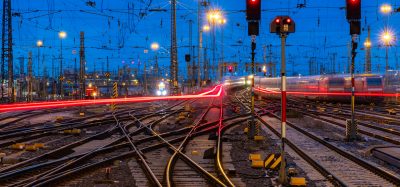HS3 is doomed to fail, but not for the reason you think
Posted: 5 October 2017 | Paul Payne (Managing Director of One Way) | 3 comments
Paul Payne, Managing Director of leading rail and construction recruitment specialists, One Way, argues that with an impending people crisis in the rail industry, the UK simply does not have the resources to complete large-scale, technologically-intricate rail projects like HS3.


HS3 has certainly been subject to numerous debates: should it happen before HS2? Will get it the support it needs, particularly from the Prime Minister? Should the project even go ahead? What hasn’t received as much publicity as it should is the question: are there enough resources to complete it?
The answer is simply, no. A combination of the rapidly approaching retirement cliff, a lack of talent pipelining and an increase in the number of projects means that the UK rail industry is approaching a people crisis.
As it stands, the HS2 project alone is expected to reach 25,000 vacancies once the project is underway. While some may say this is great for employment, there just simply aren’t enough individuals currently in the sector, or even in the employment pipeline, to meet this need.
According to the Institution of Civil Engineers, UK companies will need 1.82 million people with engineering skills by 2020 – a staggering amount for a sector that is already struggling to meet talent demands.
Just some of the skills we’re finding are in short supply but high demand are:
- Project Engineers: Professionals in these roles are highly sought-after and firms are increasingly seeking those with demonstrable technological expertise, particularly with systems including AutoCad, Microstation and PRINCE2
- Signallers: Signallers need a specific set of soft skills and will have to be able to remain calm, focused and conscientious at all times when working in these positions
- E&P engineers: There is a huge amount of electrification activity scheduled to take place in the next five or so years and estimates suggest that more than 1,000 professionals will be required
- Rolling stock technicians: The shortages here are the most acute of the entire rail industry as a result of the ageing workforce and the large number of projects that have raised workloads for these individuals.
On top of this, there’s also growing demand for tech specialists in the industry which are proving hard to source for an arena where technology is an emerging niche. The reason is relatively simple: hiring these skills requires a completely different approach to that used to source engineers. After all, these tech experts are a new breed of candidate for most rail firms, with differing wants and needs. And with growing demand for tech experts across multiple sectors, competition is certainly rife.
So what needs to happen?
In the first instance, there needs to be a recognition that the skills gap is a major problem. Until those involved in projects such as HS3 acknowledge the extent of this issue, little progress will be made. And while it may be too late to address this concern without there being a notable impact on project successes, by taking action now, future damage can be limited.
We need to see greater numbers of firms actively investing in developing new talent. This can range from putting more money into apprenticeships, to devoting budgets, to upskilling existing talent to fill gaps in expertise. It’s also worth noting that while there is a shortage of the requisite talent, if multiple projects such as Crossrail 2 and HS3 happen consecutively, rather than concurrently, the likelihood of them being well-resourced will increase.
Perhaps more importantly there needs to be an upsurge in activity promoting the rail arena as a great industry to work in. Part of the problem with attracting talent at the moment is the limited number of new candidates entering the market because too few are choosing this career route. Those already involved in rail know just how rewarding the job can be, but the message isn’t getting out there to new audiences. This is particularly true when it comes to the tech talent that’s needed in this field.
The opportunity to drive new and innovative technological developments is rife in rail, but when compared to tech giants such as Google and Amazon, few rail firms are actively promoting this. If the industry is to compete for this talent, it needs to really sell its employee value proposition, focusing more on the benefits of a career in rail.
There really is now a much greater need for employers to think about their talent pipelines into the industry and consider how they can bolster their workforces to meet the anticipated demand. Projects such as HS3 would probably be a good move for the economy, particularly in the north, but we need to be realistic and consider whether we actually have the resources to make it a reality.
Related topics
Digitalisation, Funding & Finance, High Speed Two (HS2), High-Speed Rail, Infrastructure Developments, Route Development, Training & Development









I’d note that Beeching’s proposed closure of the Hope Valley route to Manchester was overruled, and the faster (built as a potential/actual depending on the section of the route) 4 track high speed main line connected back to London by a high speed main line constructed NOT over 120 years ago as widely touted by the Secretary of State McGloughin (was he fed duff information or were officials just plian ignorant?). The route from Sheffield to Penistone is almost a straight line, and the electrification in the early 1950’s connected with existing electrified local services in Manchester electrified in the mid 1930’s starting with the MSJAAR (which has the added irony of wasted public money by starting as a 1500VDC railway (1936-1972) then becoming a 25KVAC railway 1972-1992, only to be converted back- in parts to a 750VDC ‘railway’ using the tram-train adaptation of raised check-rails and thickened wheels (above flange profile) to minimise the conversion costs and permit the use of the old railway with minimal alteration.
All of the Manchester-Sheffield-Wath OHLE was built with the provision to convert it to 25KV (further demonstrating the quality of this project planning compared to HS2!) and several parts of the 25KV around the Western end are still converted from the original 1500VDC – now that is efficient use of the installed assets.
In its prime there were hourly electric express trains Sheffield-Manchester taking 56 minutes. Overlaying modern performance we might look at say 40-45 minutes on the original route, and using the Penistone-Silkstone corridor the ‘fast’ route to Leeds via Normanton and Holbeck (now abandoned by the assumed/perceived revenue/passenger volume/connectivity policies that has all trains running via a stop at Wakefield Westgate.
The new tunnel at Woodhead was originally balanced against ‘daylighting’ parts of the old tunnels, and with modern civil engineering that might be a consideration – either as a permanent detail or as work on consort with the Water Authority, to construct a reservoir over the railway in a deep cutting storing water at the summit, and managing the collection and channelling of water around the ‘tunnel’. By breaking the silos with a project that gives advantage to the parties involved there could be many gains here (as the route from the moor-top reservoirs can run in the railway wayleaves to Sheffield and Leeds)
According to Boris Johnson, an additional ‘£350m per week’ will be released for funding the NHS after Brexit. In reality, some of these ‘savings’ could be siphoned off for infrastructure development (e.g. HS2 and HS3) and various highway improvements.
Staffing for HS3 should not be a problem either. Experienced railway project and construction staff from Crossrail will be available from the end of 2018, or earlier; it is likely that many will transfer to HS2 initially.
Several very experienced, but ‘retired’ British high-speed rail engineers are still based in the Far and Middle East (and who are keen to keep working!) are available. However, this proposal has not worked well for staffing the HS2 project so far.
A considerable number of ‘retired’ ex-British Railway engineers live in the north of England and would be (at least) willing to help with the training of young engineers new to the railway profession for work on HS3.
There is also the possibility of employing experienced railway engineers (but not HS) from India, South Africa, etc. and who are willing to be trained for HS work in the UK.
So it is not all ‘doom and gloom’ for the UK’s high speed rail projects!
For the same reason, plus a potential nosedive in available funding due to Brexit, I think that the construction of HS2 as planned is not a foregone conclusion. HS3 will then remain a pipe dream for a very long time to come.